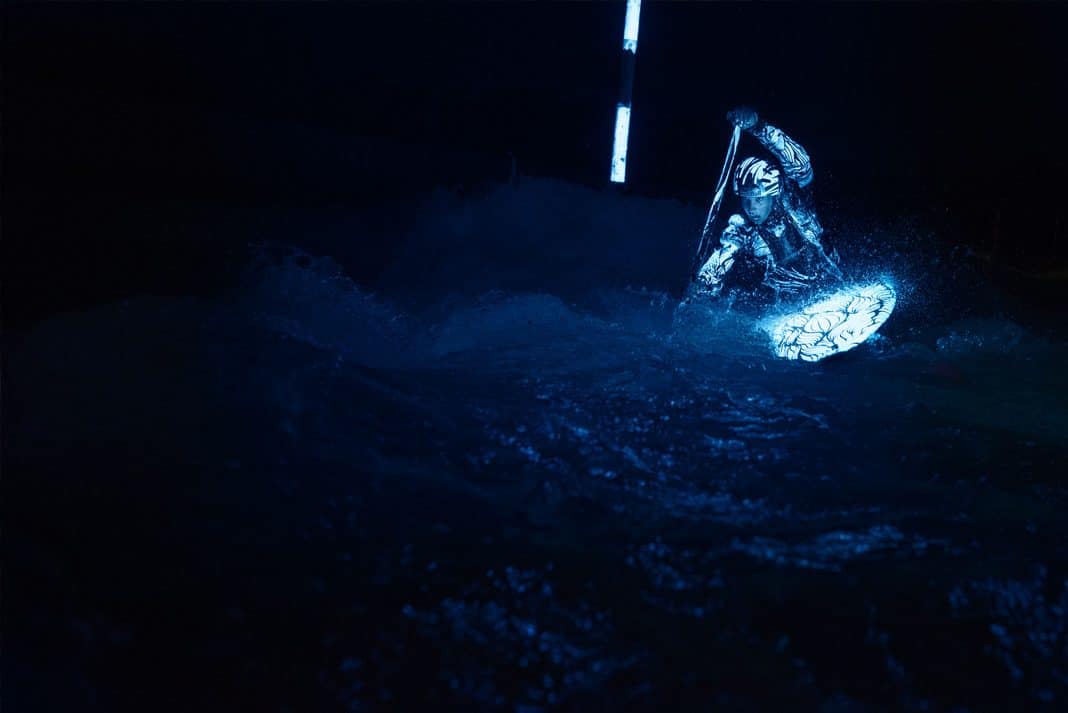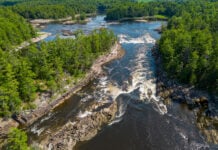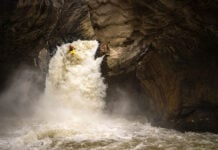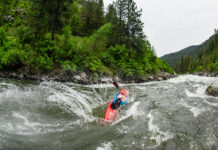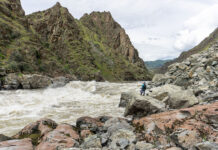Blacklight photography creates images using ultraviolet radiation and fluorescent inks and paints, captured in pitch darkness. It’s typically used in portraiture; if done well the results are otherworldly, revealing colors and textures beyond the usual perception of the human eye. “In blacklight photography, the flash doesn’t actually light the scene but rather provides UV light illuminating certain elements in the picture,” explains Markus Berger, an Austrian commercial photographer. “Those illuminations bring light to the scene and work as actual light sources.”
Tracking a moving subject to compose and focus an image in the dark makes blacklight sports photography exponentially more difficult. But the challenge didn’t stop Berger, a Red Bull-sponsored lensman, from attaching ultraviolet filters to his Broncolor flashes and capturing ethereal images of BMX riders, skateboarders and breakdancers. Recently, he partnered with Viktoria Wolffhardt, an Austrian ICF canoe slalom athlete, to add the dynamic nature of flowing water to the list of technical difficulties.
Berger and Wolffhardt met at the artificial whitewater course at the Vienna Watersport Arena for the shoot. In daylight, they worked together to determine the best angle and perspective for a photograph. “I always consult with the athlete and try to work as close as possible to get credible outcomes serving both photographic but also sport-specific excellence,” notes Berger.
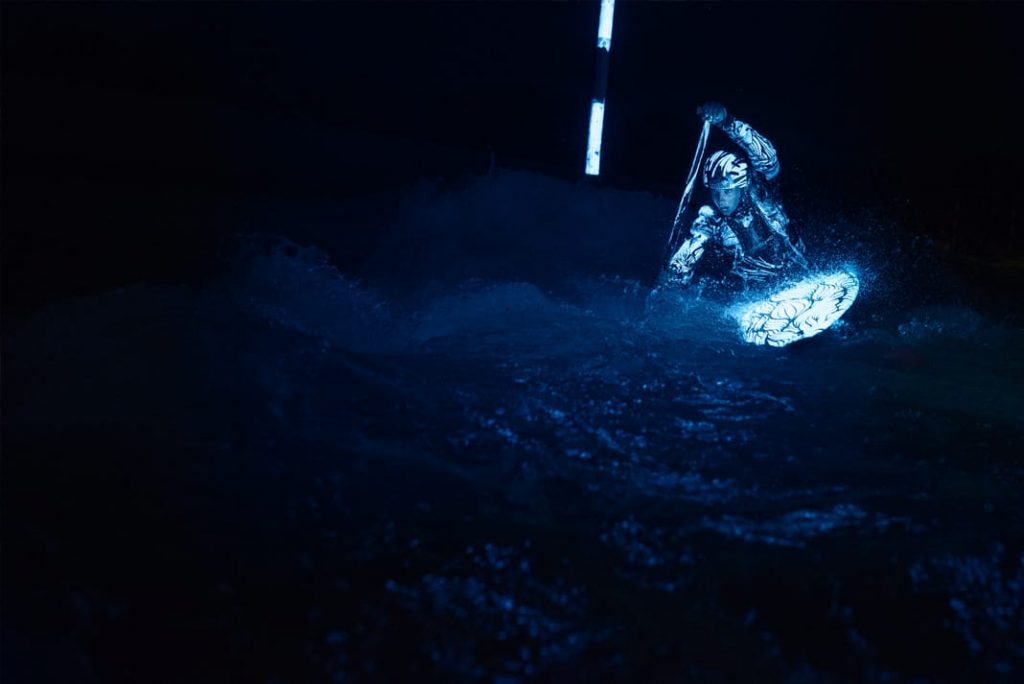
Photo: Markus Berger
As darkness fell, Wolffhardt put on her wetsuit and helmet and Austrian visual artist Emanuel Jesse applied a design to her head and body blending into the one applied to her C1 kayak. “All the lines needed to flow and represent water,” Berger says. “We were just hoping the paint would hold up and not wash off after Viki’s first try.”
At nightfall, Wolffhardt launched and made her first descent through the gates. “This was the point when I learned water is just unpredictable,” recalls Berger. “Even though we had a fixed location and specific action in mind, every time Viki passed it was slightly different. That’s just the way it is with water. You have to go with the flow and stay alert to capture the moment when it arises.”
The unpredictably of moving water forces a photographer to stay in the moment, says Berger. “It brings you a bit closer to life.”
Berger was amazed at Wolffhardt’s stamina. “She was tireless and simply amazing. She gave me at least 30 attempts to capture the image I wanted,” he says. “That is what stands out for me with this project—the heart and passion put in by the people who were there and believed in it from the beginning.”
As for the resulting images, Berger says he’s proud to have created pieces of art having never been done before. “I think the combination of street art, a high-class athlete, the nature of the water, and the way it was all photographed is a cool combination capturing the passion in so many ways,” he adds. “I think people today are used to looking at hundreds of images in a minute. But I still believe you can look at one great image for hundreds of minutes and find new details and stories.”
“That’s what this is all about—taking the time and allowing the photograph to sink in.”
Flourescene refers to the colored glow many substances emit when exposed to UV. | Photo: Markus Berger



